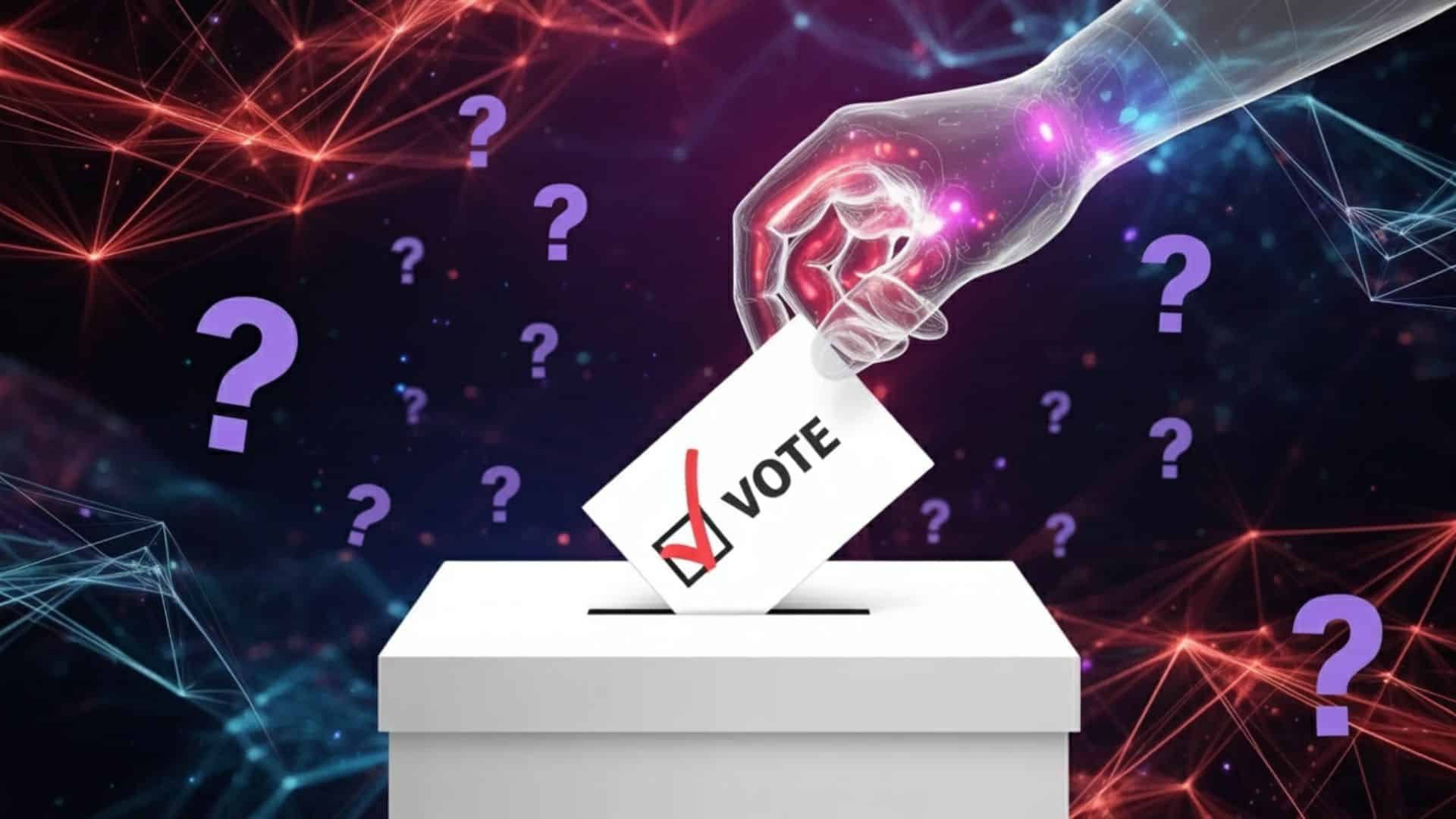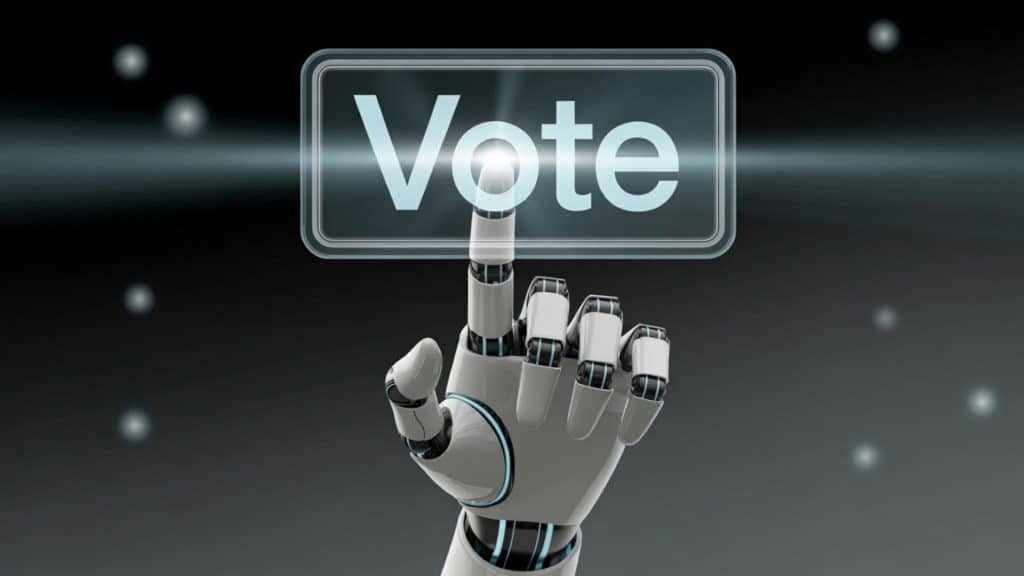Have you ever wondered how modern campaigns reach millions of voters with personalized messages?
Political campaigns today bear little resemblance to those of decades past.
Digital tools and intelligent systems have significantly changed how candidates connect with supporters and manage their election efforts.
From automated voter outreach to real-time sentiment tracking, technology now controls every aspect of campaign strategy.
Social media platforms utilize sophisticated algorithms to target specific audiences, while security systems safeguard the entire voting process against cyber threats.
In this blog, I’ll show you exactly how technology and AI are reshaping election campaigns and what the future holds for digital democracy.
How Technology & AI Changed the US Elections?
Digital tools now shape every part of modern political campaigns. Candidates reach voters through advanced software and automated systems, rather than traditional methods.
Campaign strategies have moved from door-to-door visits to tech-based approaches. Political teams use smart algorithms to connect with supporters more effectively.
Key Changes in US Elections:
- Analytics forecast voting patterns and optimize campaign messaging.
- Automated bots handle voter inquiries and distribute updates.
- Monitoring systems provide continuous tracking of public sentiment.
- Intelligent systems identify potential donors for targeted outreach.
- Digital platforms enable remote candidate-voter engagement.
These changes have made political campaigns more precise and efficient while reaching far more people than ever before possible.
Impact of Technology on The Election Process

Technology has completely changed how elections work from start to finish. Every step now uses digital tools to make voting easier and more accurate.
The election process relies on advanced systems to handle voter registration, ballot counting, and result reporting much faster than manual methods could ever achieve.
Key Technology Impacts:
- Faster Vote Processing: Electronic systems count ballots in minutes instead of hours, allowing quicker result announcements on election night.
- Better Voter Access: Online registration and digital polling information help more people participate in elections than before.
- Real-Time Monitoring: Election officials can track voting patterns and turnout rates instantly throughout the day.
- Enhanced Security: Digital audit trails and backup systems safeguard against vote tampering, providing robust verification methods.
- Enhanced Transparency: Online result reporting allows voters to see election outcomes immediately, rather than waiting for newspaper reports.
These changes have made elections more efficient and reliable while increasing voter confidence in the democratic process nationwide.
Ways AI Influences Voter Targeting and Engagement
Smart systems now help political campaigns identify the right voters and craft messages that resonate with them. These tools analyze massive amounts of data to predict voter behavior.
Personalized Campaign Messages
Smart algorithms study what voters care about most based on their online activity. Campaigns then create custom messages that speak directly to each person’s interests and concerns.
These systems can write different versions of the same message for various groups. A message about healthcare might focus on family benefits for parents, but highlight senior care for older voters.
Voter Behavior Analysis
Advanced software tracks how people interact with political content online and predicts their voting preferences. This helps campaigns know which voters might change their minds during election season.
The technology studies social media posts and survey responses to build detailed profiles. Campaign teams use this information to focus efforts on persuadable voters.
Targeted Social Media Advertising
Geo-targeting tools enable campaigns to tailor messages to regional concerns, such as local healthcare or education issues.
These tools decide which message works best for each person based on their demographics and interests. The technology can test multiple ad versions simultaneously and automatically display the most effective one.
Real-Time Engagement Optimization
Smart systems monitor how voters respond to campaign content and adjust strategies instantly throughout the day. If one message performs poorly, the technology automatically switches to better-performing alternatives.
These tools track click rates, sharing patterns, and comment sentiment to measure success. Campaign managers can see which approaches work best and make changes without waiting for weekly reports.
Social Media Influence with AI-Powered Tools
Advanced social media tools help campaigns reach voters more effectively by creating targeted content. These systems analyze online conversations to track changes in opinion in real-time.
| AI Tool Type | Function | Key Features |
|---|---|---|
| Content Analysis | Monitors conversations | Tracks voter concerns in real-time |
| Automated Posting | Schedules content | Maintains consistent messaging |
| Trend Prediction | Identifies trending topics | Alerts campaigns early |
| Sentiment Tracking | Measures reactions | Shows message effectiveness |
| Bot Detection | Finds fake accounts | Protects from spam |
| Influencer Matching | Connects with popular users | Expands reach through trusted voices |
These smart social media tools help campaigns create more engaging content while reaching the right voters at the perfect time.
Role of Technology in Election Security

Advanced security systems now protect elections from cyber attacks and fraud attempts. These digital tools help ensure voting remains safe and trustworthy.
1. Encrypted Voting Systems
Modern voting machines use strong encryption to protect ballot data from hackers. These security layers prevent unauthorized access to vote counts during transmission and storage.
2. Blockchain Verification
Some election systems use blockchain technology to create permanent records of each vote. This method makes it nearly impossible to change results without detection.
3. Cybersecurity Monitoring
Security teams watch for suspicious online activity targeting election infrastructure. These experts utilize advanced tools to block attacks and safeguard voter databases against hackers.
4. Paper Backup Systems
Many locations combine digital voting with paper receipts for extra security. These backup records allow officials to verify electronic results through manual recounts when needed.
5. Biometric Voter Authentication
Fingerprint and facial recognition systems help confirm voter identity at polling stations. This technology prevents people from voting multiple times or using fake identification documents.
Future Role of AI in Election Campaigns
Advanced intelligent systems will make election campaigns even more precise and efficient in the years to come. These tools will help candidates connect with voters through new methods.
Expected Future Developments:
- Voice-activated assistants that answer voter questions instantly through smart speakers.
- Predictive models that forecast election outcomes weeks in advance using real-time data.
- Virtual reality campaign events allow voters to meet candidates from the comfort of their own homes.
- Advanced chatbots that discuss policy issues with voters naturally.
- Smart systems that recommend candidates based on voter preferences.
- Automated fact-checking tools that verify campaign statements immediately.
These emerging technologies will enhance campaign interactions, enabling voters to make more informed decisions while reducing misinformation during elections.
Wrapping It Up
In summary, technology and AI have significantly transformed the way election campaigns are conducted today.
Digital platforms are turning election campaigns into data-driven operations. AI reshapes the voter experience by making campaigns more personal and engaging
Social media platforms powered by AI enable candidates to target specific groups, while automated tools streamline campaign operations.
Advanced security features protect election integrity through encryption and monitoring systems.
Looking ahead, voice assistants, virtual reality events, and predictive modeling will further transform political engagement.
As these technologies continue to evolve, they will change the way democracy operates in our digital world.
What aspects of AI in elections concern you most? Share your thoughts in the comments below.





































